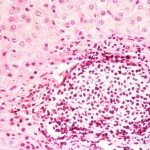Link to Pubmed [PMID] – 18632458
Philos Trans A Math Phys Eng Sci 2008 Oct;366(1880):3445-62
Genetically encoded probes have become powerful tools for non-invasive monitoring of ions, distributions of proteins and the migration and formation of cellular components. We describe the functional expression of two molecular probes for non-invasive fluorescent monitoring of intracellular Cl ([Cl]i) and the functioning of glycine receptor (GlyR) channels. The first probe is a recently developed cyan fluorescent protein-yellow fluorescent protein-based construct, termed Cl-Sensor, with relatively high sensitivity to Cl (Kapp approximately 30 mM). In this study, we describe its expression in retina cells using in vivo electroporation and analyse changes in [Cl]i at depolarization and during the first three weeks of post-natal development. An application of 40 mM K+ causes an elevation in [Cl]i of approximately 40 mM. In photoreceptors from retina slices of a 6-day-old rat (P6 rat), the mean [Cl]i is approximately 50 mM, and for P16 and P21 rats it is approximately 30-35 mM. The second construct, termed BioSensor-GlyR, is a GlyR channel with Cl-Sensor incorporated into the cytoplasmic domain. This is the first molecular probe for spectroscopic monitoring of the functioning of receptor-operated channels. These types of probes offer a means of screening pharmacological agents and monitoring Cl under different physiological and pathological conditions and permit spectroscopic monitoring of the activity of GlyRs expressed in heterologous systems and neurons.

